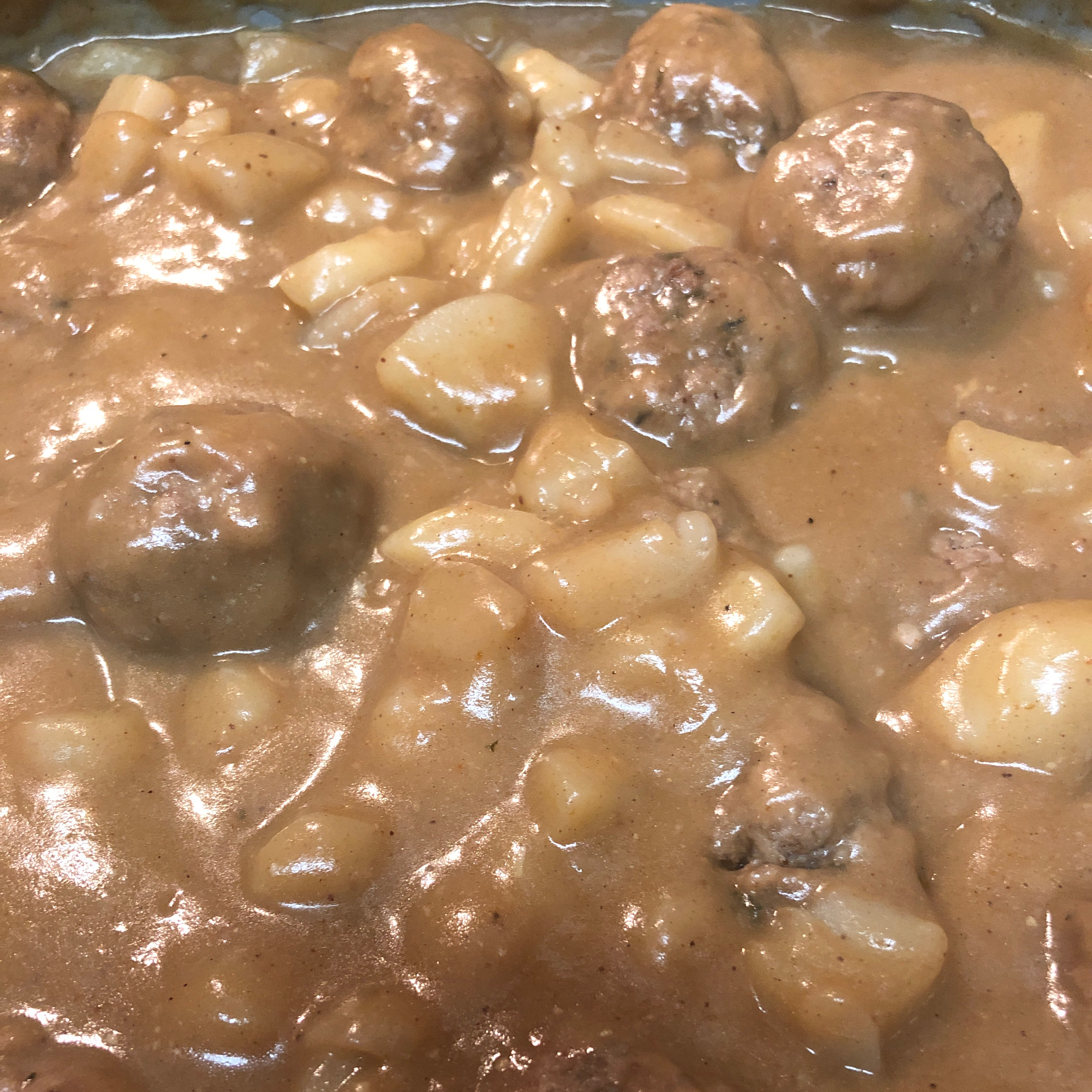French Canadian Meatball Stew

This is a traditional meal in the homes of the French Canadians that will leave your home smelling of warm spices and your belly full.
INGRIDIENT
DIRECTION
Step: 1
Preheat oven to 425 degrees F (220 degrees C). Spread flour out in a thin, even layer on a baking sheet.
Step: 2
Roast the flour in the preheated oven until medium brown in color, 10 to 15 minutes; stir often and watch carefully to avoid burning. Remove the flour from the baking sheet immediately once the desired color has been reached; set aside in a shallow bowl to cool.
Step: 3
Melt butter in a large, heavy pot over medium heat, and cook and stir the onion until translucent, about 5 minutes. Transfer the onion to a large mixing bowl. In a small bowl, mix the cinnamon, nutmeg, and cloves; stir the spice mix into the onion. Place ground pork, parsley, egg, and bread crumbs into the bowl, and mix to combine thoroughly. Form the meat mixture into 1-inch meatballs; roll each meatball in the roasted flour. Reserve unused flour.
Step: 4
Pour the chicken broth into the pot, bring to a boil over medium heat, and carefully drop in the meatballs, a few at a time, stirring to keep them from sticking on the bottom. Drop in the bay leaf. Simmer the meatballs for 20 minutes; mix in the potatoes, and simmer until potatoes are tender and the broth has reduced, an additional 20 minutes. Transfer the meatballs into a bowl with a slotted spoon.
Step: 5
Remove and discard bay leaf. Mix remaining roasted flour with cold water in a cup, and gradually whisk the flour mixture into the simmering broth to thicken. Bring the gravy to a full boil, and cook, stirring constantly, until the gravy thickens, about 5 minutes. Return the meatballs to the stew, and serve.
NUTRITION FACT
Per Serving: 445 calories; protein 27.9g; carbohydrates 35.6g; fat 20.9g; cholesterol 107.5mg; sodium 230.2mg.
The word “stew” can refer to both a dish and a make dishes method. Stewing involves not fast cooking chunks of meat, raw fruit or beans in a tastefull liquid . It’s same as to braising, but it makes have a few piece of differences. The meat is chopped into smaller pieces instead of being cooked whole , and the liquid all of it covers the essential in a stew as different to a braise’s halfway full . When meat or raw fruit are cooked using this method, the resulting dish is called stew.
Stew has a reputation for making a rib-sticking eating process that warms you up on a freezing , winter day. It’s right that ; a bowl of old menu of beef stew does have warming featured food , but stew’s cozy factor more than a way beyond protecting you from the chill . It’s all about those tender chunks of meat and vegetables, swimming in a thick, ultra-rich gravy. The way they come together creates the ultimate comfort food, no matter the weather.





